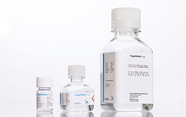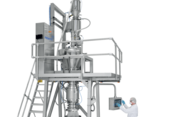Exploring Placenta-Derived Stem Cell Therapy
Researchers conduct small phase I study on the potential of placenta-derived stem cell therapy to treat a serious form of MS with limited therapeutic options
| 2 min read | News

A phase I clinical trial has investigated the safety and feasibility of intravenous placenta-derived mesenchymal stem cells (PLMSCs) in patients with secondary progressive multiple sclerosis (SPMS). The study, conducted at Tehran University of Medical Sciences, involved five individuals with SPMS who had not responded to conventional disease-modifying treatments.
PLMSCs were selected for their immunomodulatory and anti-inflammatory properties, as well as their potential neuroprotective effects. The cells were isolated from full-term placentas following cesarean deliveries and expanded under GMP conditions. Each patient received a single intravenous dose of 3 million PLMSCs per kilogram of body weight.
The primary endpoint of the study was safety and tolerability over a six-month follow-up. No serious adverse events were reported.
Secondary, exploratory outcomes included assessments of neurological function, cognitive and psychological performance, imaging changes, and immunological markers. Neurological disability was measured using the Expanded Disability Status Scale, which showed a statistically significant decrease over six months (p < 0.0001). Cognitive improvements were observed in tasks related to memory, verbal fluency, and executive function. Fatigue and psychological symptoms such as hostility and somatization also showed reductions.
Neuroimaging analyses provided additional insights. Functional MRI revealed increased connectivity in several brain regions, particularly in the default mode and parietal networks, areas associated with memory and spatial processing. Diffusion tensor imaging (DTI) detected a significant decrease in radial diffusivity in the normal-appearing white matter of the left hemisphere (p = 0.0186), a potential indicator of improved axonal integrity. However, no significant changes were noted in total brain volume or lesion load.
The authors emphasize that the trial was designed to assess safety, not efficacy. While the preliminary findings suggest possible clinical and immunological benefits, the small sample size and lack of a control group limit generalizability. Further randomized, controlled studies are needed to evaluate therapeutic efficacy and understand underlying mechanisms.



















